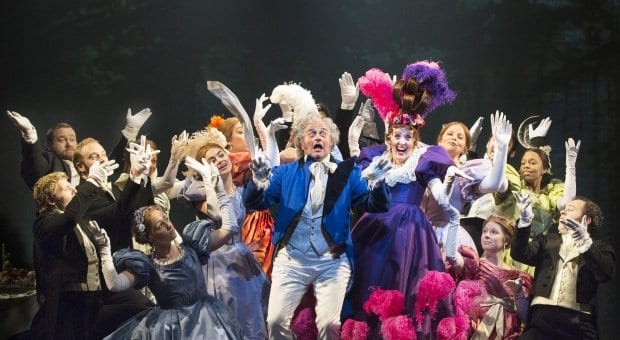Years ago I saw a production of Les Misérables that had me weeping from intermission until well after I’d left the theatre. My boyfriend (now ex-boyfriend) and I cried pathetically, all over each other, like soggy little babies. The musical became fixed in my mind as the most poignant thing I’d seen, and probably would see, onstage. The only thing that even came close to it was the brilliant play Mahmoud, which I saw more recently at the 2012 Toronto Fringe Festival.
Opening night of the current Mirvish production of Les Misérables didn’t have the same effect. Maybe the emotion I experienced when I saw it years ago was the result of my youth and some spillover of the intense feelings I had for my companion, so it would be unfair of me to expect the same effect from the Mirvish production. In any case, this time around the passion in the musical felt forced. The singing was marvellous, but just as I settled into a given moving scene (someone in love, perhaps), I would be violently thrust into the next (oh, now somebody’s dying!), with very little time to come to care about what was happening in each new scene.
That’s not to say I didn’t cry, because I did a bit. Somewhere amid the whirlwind of ham-handed, assembly-line-style, manufactured joy and sadness, I found myself moved by the brilliant acting and singing. Singing so sublime that it did occasionally overcome the mad pace of the musical and inspire tears. That is, except Éponine. She’s supposed to be a street-savvy character, but Melissa O’Neil plays her like she’s the star of a pop music video — she’s more like Mariah Carey than an early-19th-century Parisian street urchin.
If you’re looking not for tears, but just fantastic singing, then you can do no better than this production’s renditions of “Castle on a Cloud,” “Do You Hear the People Sing” and “Bring Him Home.” And “Master of the House”! While some scenes failed to evoke the desired emotional effect, the jolly, nasty crooks in the inn were flawlessly funny. It even had my grumbling companion laughing (I took a curmudgeon with me this time around). It was a welcome break from the quasi-soppiness that pervades most of the rest of the musical.
The sets are brilliantly conceived, and the transitions between locations are fluid, but the projections are the most striking thing about the scenery. Projections are used from time to time to help simulate running through tunnels, falling or appearing out of nowhere. I wouldn’t have thought it possible, but the effect is spellbinding and probably preferable to attempts at the same effects with sets and props.
Les Misérables runs until Sun, Dec 22 at Princess of Wales Theatre, 300 King St W. mirvish.com


 Why you can trust Xtra
Why you can trust Xtra


